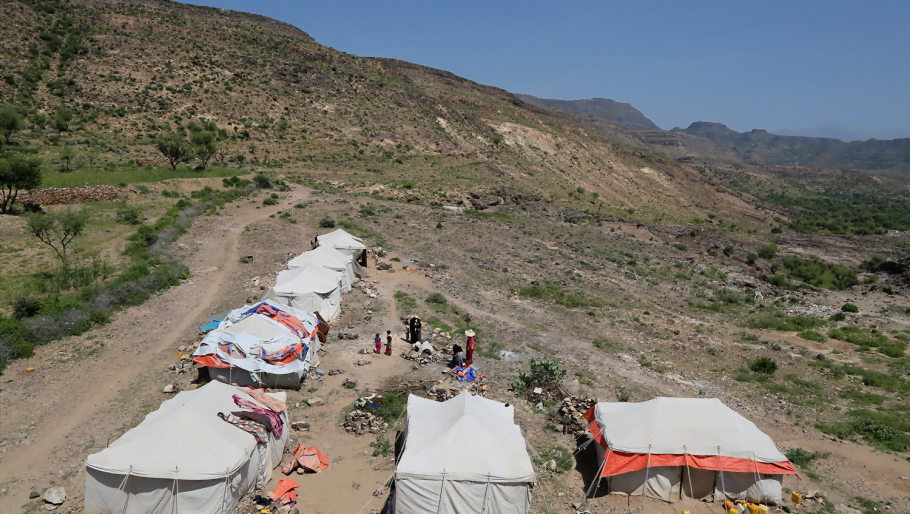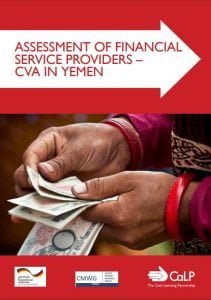Mapping Financial Service Providers for CVA: Read this before you start!

When it comes to CVA programming, there are so many stakeholders that need to be involved and even more context-related considerations to take into account – and the truth is, you don’t have to do it alone (and you shouldn’t)!

A recent mapping exercise conducted in Yemen captured much richer information than usual for this type of study. The wealth of knowledge gained and the relationships built between Cash and Voucher Assistance (CVA) actors and Financial Service Providers (FSPs) is set to provide real and tangible benefits to the way CVA is delivered in Yemen in the future. Rich insights were shared by key informants among communities, humanitarian organisations and FSPs. The study has shed light on the untapped opportunities of closer collaboration and work with FSPs more broadly.
Why do Financial Service Providers mapping exercises matter?
Complex contexts are the new normal, but a thorough understanding of our landscape, can help us to navigate and re-navigate operationally when designing and adapting CVA programmes.
FSP mapping exercises present feasible and available CVA mechanisms that can be incorporated into the programme design, reach and access of communities geographically, socially and legally, and expert navigation of the financial landscape that further sheds light on key considerations that may not be very visible to organizations.
Information sharing and coordination enables all of us to develop better CVA responses that are relevant and effective and built on inclusive engagement of communities, private sector and markets.
Four factors that led to a successful mapping report
This FSP mapping was undertaken in one of the world’s most complex humanitarian contexts yet, despite the challenges, it yielded comprehensive information and deep insights. Four important take-aways:
1. Collaboration & Engagement
By involving a diverse range of stakeholders, we were able to create a well-resourced, well-rounded product. Here’s what we did:
We worked with the CWG.
First and foremost, the study was coordinated through the Cash & Markets Working Group (CMWG). The CMWG played a vital role in actively encouraging the participation of humanitarian organizations in the study. This resulted in more eyes and ears engaged in collecting information and providing feedback.
We consulted before acting.
Informal chats were held with key stakeholders and experts in order to identify important research topics. This took place before data was collected and was coordinated through a joint effort by REACH and CMWG partner organizations. This not only improved buy-in but also gained insightful reflections that may not have been considered otherwise.
We worked with partners in the areas being mapped.
This ensured valuable access to communities and FSPs and the partners then provided contextual understanding to help interpret the findings. This not only enhanced engagement, but enabled us to overcome limitations around the capacity of assessment teams and their access on the ground.
2. Deep listening
It’s one thing to understand which CVA mechanisms can be used, it’s another to understand whether communities want them, need them or even understand them.
We collected a range of perspectives.
Through a mixed methods approach, the input from different stakeholders (communities, FSPs and humanitarian organizations) and the triangulation of evidence and perspectives, we uncovered dynamics and created a dialogue that brought out opportunities and challenges.
We spoke to communities.
The mapping was able to capture different community perspectives, and included a gender-lens. It provided insights to the current ‘state of affairs’ of CVA programmes in terms of their accessibility to local communities.
We spoke to practitioners.
We interviewed FSPs and humanitarian actors – creating space to listen to their experiences and lessons learned.
An inclusive and participatory mixed methods approach proved to be an efficient and effective way to capture the different perspectives – in both reach and depth.
3. Two-way conversations with FSPs
By offering FSPs a platform to share their views, and to describe their role in the CVA landscape, we saw improved buy-in and participation. We were able to have meaningful conversations with FSPs that led to a fantastic level of cooperation, and even resulted in them sharing data and their consent to make it public. Why was this?
We asked deeper questions.
An evaluation of FSPs usually revolves around the questions of: what services can be offered and at what price? What is their reach in the market? While this is all core information needed for finance and programs teams, it reduces FSPs to financial infrastructures, when in reality there is a lot more to them.
We acknowledged their expertise.
We approached FSPs as experts of CVA, of local regulations, and of the latest developments on the ground.
We asked for their advice.
We went beyond asking FSPs for service provision information and asked what advise they would give the humanitarian organizations they worked with. For example, which CVA option did they find most feasible, and what would be needed to implement this option in Yemen?
4. Mapping beyond borders
Borderless information sharing can enrich a study by bringing developments, learning and new solutions from similar contexts which allows practitioners to consider and explore novel topics.
We searched for examples of good practice.
Secondary resources enriched our debate around the role and place of hawala agents within the wider response, for instance. We looked for findings that supported and challenged our own, or that highlighted good practices that had not yet been tried in Yemen. Our literature review reflected on FSP and CVA assessments in comparable settings such as best practices from Syria. This was key in exploring the use of tokens, which can contribute to programming and advocacy efforts of the CMWG in Yemen.
Conclusion
We hope you’ve found this helpful. While a collaborative and inclusive approach to CVA and FSP mapping takes more time, the results are richer and more useful as a result.
Read the report for more information on the findings and methodology used in Yemen!
In the photo: A camp in Taiz governorate where dozens of displaced families have been living since 2017. Credit: Nasser Abdulkareem/NRC
About the Authors

Nissa Berntsen is an assessment officer at REACH Initiatives, where she is the cash and markets focal point for REACH Yemen. She was closely engaged in the research and writing of the Yemen FSP mapping report. Before joining REACH, Nissa acquired experience in development and humanitarian support, specifically in the Middle East.
Crys Chamaa is the Deputy Regional Representative for the CALP Network’s MENA Team.


